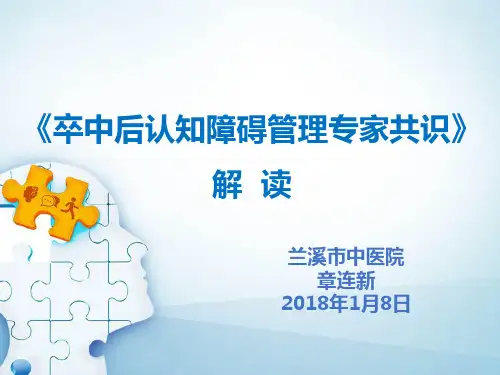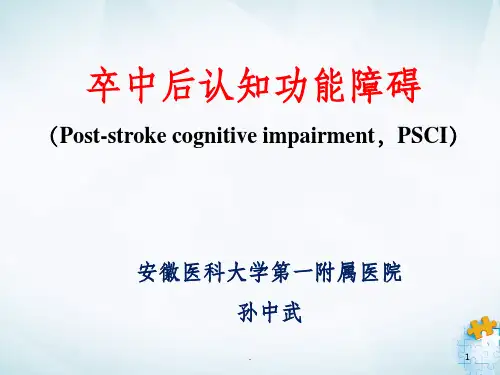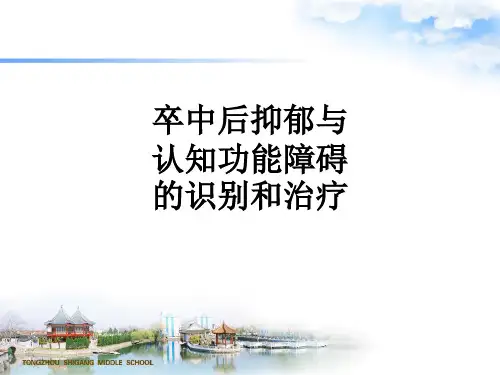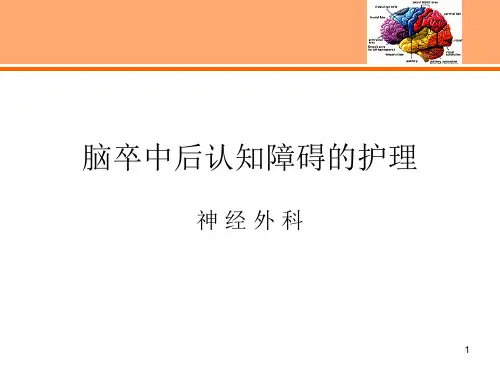《卒中后认知障碍管理专家共识》解读王修哲教学幻灯片
- 格式:pptx
- 大小:1.52 MB
- 文档页数:31
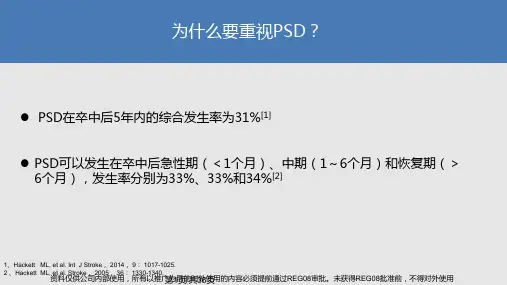


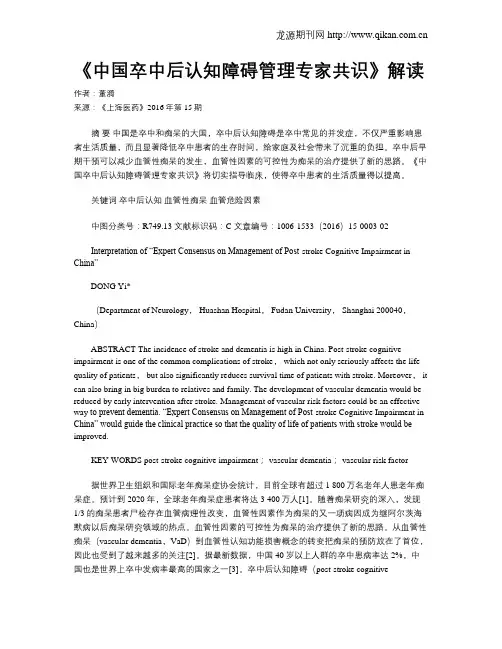
《中国卒中后认知障碍管理专家共识》解读作者:董漪来源:《上海医药》2016年第15期摘要中国是卒中和痴呆的大国,卒中后认知障碍是卒中常见的并发症,不仅严重影响患者生活质量,而且显著降低卒中患者的生存时间,给家庭及社会带来了沉重的负担。
卒中后早期干预可以减少血管性痴呆的发生,血管性因素的可控性为痴呆的治疗提供了新的思路。
《中国卒中后认知障碍管理专家共识》将切实指导临床,使得卒中患者的生活质量得以提高。
关键词卒中后认知血管性痴呆血管危险因素中图分类号:R749.13 文献标识码:C 文章编号:1006-1533(2016)15-0003-02Interpretation of “Expert Consensus on Management of Post-stroke Cognitive Impairment in China”DONG Yi*(Department of Neurology, Huashan Hospital, Fudan University, Shanghai 200040,China)ABSTRACT The incidence of stroke and dementia is high in China. Post-stroke cognitive impairment is one of the common complications of stroke, which not only seriously affects the life quality of patients, but also significantly reduces survival time of patients with stroke. Moreover, it can also bring in big burden to relatives and family. The development of vascular dementia would be reduced by early intervention after stroke. Management of vascular risk factors could be an effective way to prevent dementia. “Expert Consensus on Management of Post-stroke Cognitive Impairment in China” would guide the clinical practice so that the quality of life of patients with stroke would be improved.KEY WORDS post-stroke cognitive impairment; vascular dementia; vascular risk factor据世界卫生组织和国际老年痴呆症协会统计,目前全球有超过1 800万名老年人患老年痴呆症。
